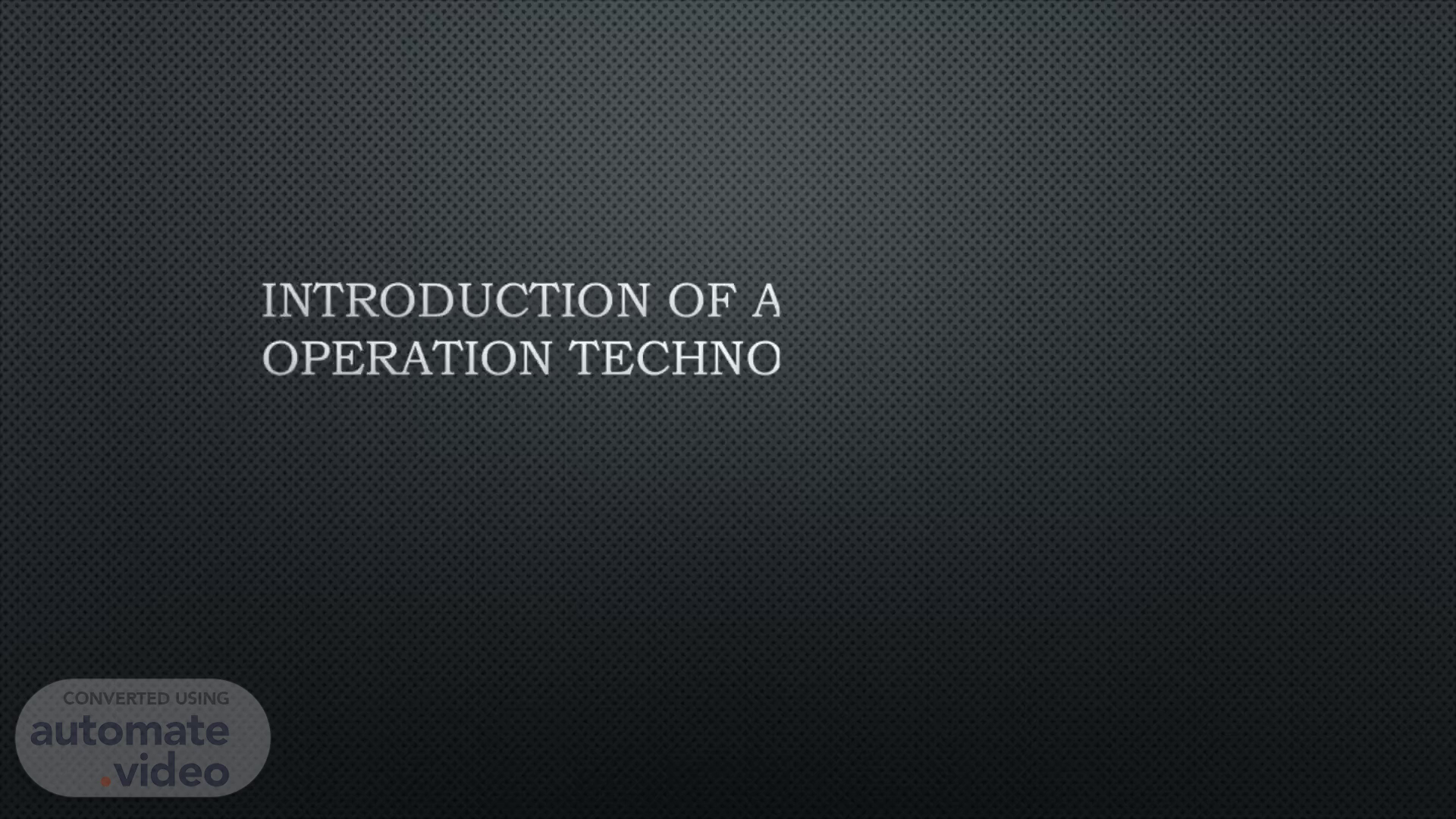
INTRODUCTION OF ANESTHESIA and operation TECHNOLOGY
Scene 1 (0s)
INTRODUCTION OF ANESTHESIA and operation TECHNOLOGY.
Scene 2 (6s)
DEFINITION :. Anesthesia is a state of controlled, temporary loss of sensation or awareness that is induced for medical or veterinary purposes. Operation technology is a programmable systems or devices that interact with the physical environment..
Scene 3 (19s)
History of anesthesia. T he “Anesthesia” word was discorved by : Oliver Wendet Holmes. In, 1844 Horace Wells discovered anesthetic propery of nitrogen oxide. But he failed to demonstrate it. In 17 th century Joseph Priestrey introduced nitrogen oxide and oxygen has anesthetic propery..
Scene 4 (35s)
In 16 th Oct 1864. VViIIiarn Thornas Green Morton The father Of Modern Anaesthesia American dental surgeon who in 1 846 gave the first successful public dernonstration Of ether anaesthesia during surgery. He is credited with gaining the rnedical world's acceptance Of surgical anaesthesia-.
Scene 5 (47s)
The 1 st anesthetist practicing was Dr. Snow. And as the years go on this was used in different fields and surgery..
Scene 6 (1m 6s)
The operation theaters IN 19 TH CENTURY:. No drugs no sedation. Half of those who underwent surgery in 19 th century didn’t survive the experience. Scottish surgeon Robert liston is known as the “fastest knife in the west end” The biggest problem was that hospitals had absolutely disgusting hygiene and sanitary conditions and most doctors could spread germs from patient to patient was scoffed at. In fact, most doctors insisted on wearing their bloodied aprons all day, going from patient to patient , the aprons gathering more blood and muck, as a badge of honour But those disastrous time did not last forever and it was 173 years ago ,a time when surgary was incredibly hazardous, that a young Quaker surgeon named Joseph Listert stepped forward with his theory about germs that would change the course of medical history.
Scene 7 (1m 41s)
In 19 th century:.